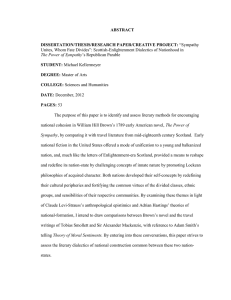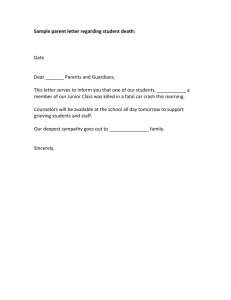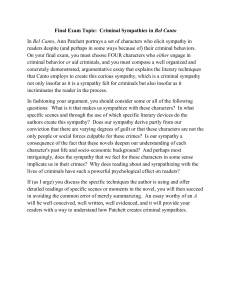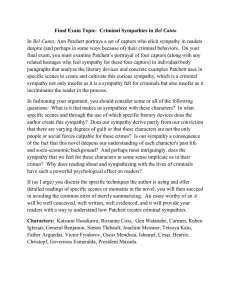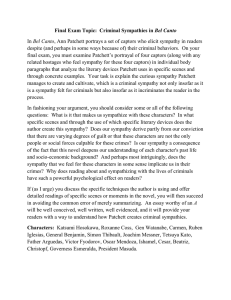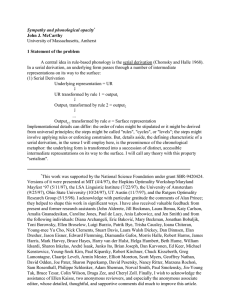24.962 Page 1 4/11/05 Assignment #9: Yokuts sympathy
advertisement
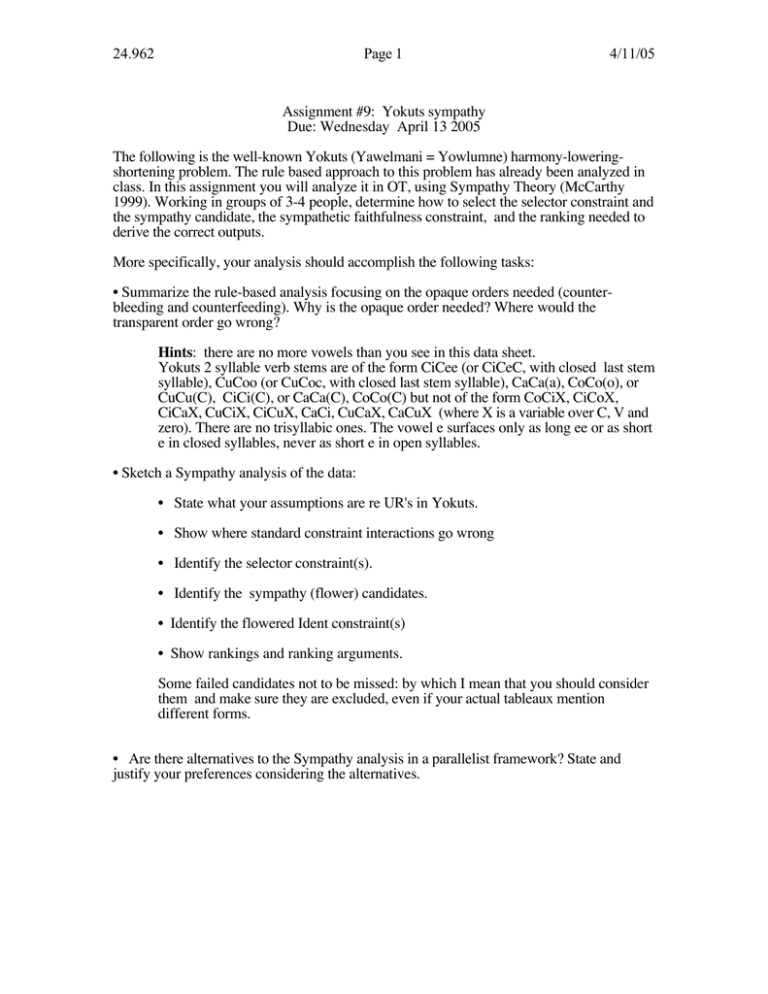
24.962 Page 1 4/11/05 Assignment #9: Yokuts sympathy Due: Wednesday April 13 2005 The following is the well-known Yokuts (Yawelmani = Yowlumne) harmony-loweringshortening problem. The rule based approach to this problem has already been analyzed in class. In this assignment you will analyze it in OT, using Sympathy Theory (McCarthy 1999). Working in groups of 3-4 people, determine how to select the selector constraint and the sympathy candidate, the sympathetic faithfulness constraint, and the ranking needed to derive the correct outputs. More specifically, your analysis should accomplish the following tasks: • Summarize the rule-based analysis focusing on the opaque orders needed (counterbleeding and counterfeeding). Why is the opaque order needed? Where would the transparent order go wrong? Hints: there are no more vowels than you see in this data sheet. Yokuts 2 syllable verb stems are of the form CiCee (or CiCeC, with closed last stem syllable), CuCoo (or CuCoc, with closed last stem syllable), CaCa(a), CoCo(o), or CuCu(C), CiCi(C), or CaCa(C), CoCo(C) but not of the form CoCiX, CiCoX, CiCaX, CuCiX, CiCuX, CaCi, CuCaX, CaCuX (where X is a variable over C, V and zero). There are no trisyllabic ones. The vowel e surfaces only as long ee or as short e in closed syllables, never as short e in open syllables. • Sketch a Sympathy analysis of the data: • State what your assumptions are re UR's in Yokuts. • Show where standard constraint interactions go wrong • Identify the selector constraint(s). • Identify the sympathy (flower) candidates. • Identify the flowered Ident constraint(s) • Show rankings and ranking arguments. Some failed candidates not to be missed: by which I mean that you should consider them and make sure they are excluded, even if your actual tableaux mention different forms. • Are there alternatives to the Sympathy analysis in a parallelist framework? State and justify your preferences considering the alternatives.
